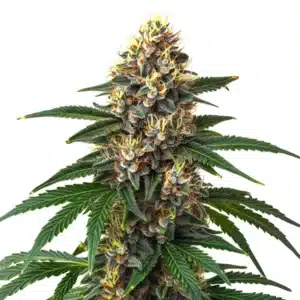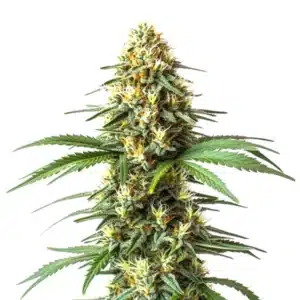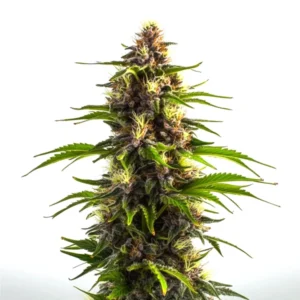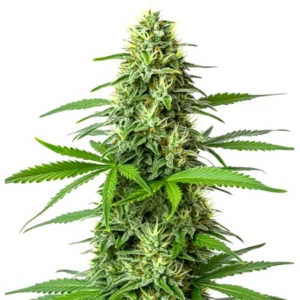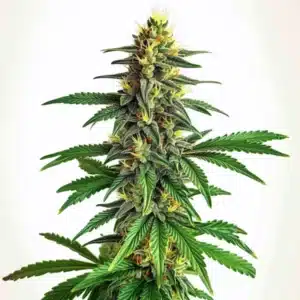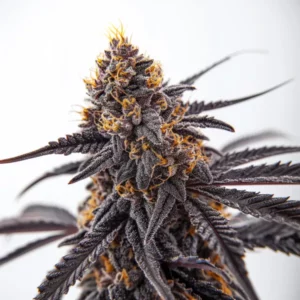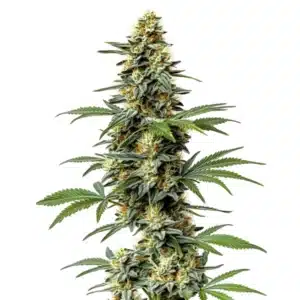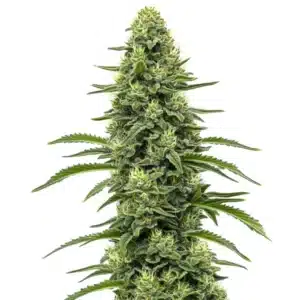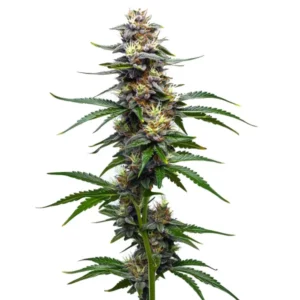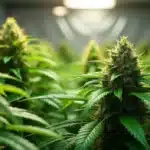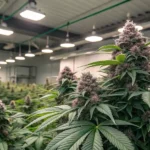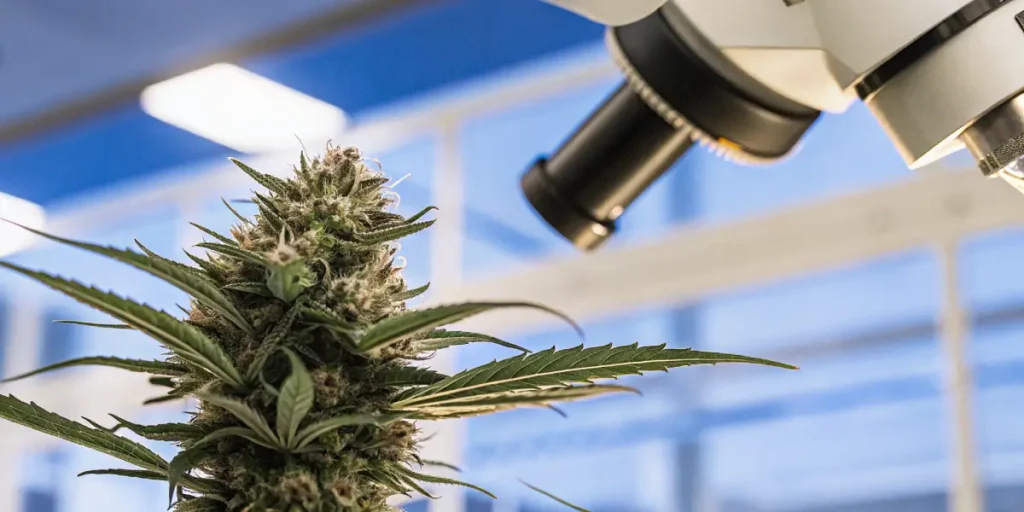
Scientific Studies on Cannabis Photoreceptors
Scientific Studies on Cannabis Photoreceptors have revealed fascinating insights into how light influences the growth and development of cannabis. Photoreceptors are like tiny light sensors in plants. They help cannabis plants understand their environment, guiding them to grow properly. Knowing about these can make a big difference in cultivating high-quality cannabis.
One exciting aspect of the latest research on cannabis photoreceptors is how different colors of light can affect growth. Blue and red wavelengths, for example, are crucial for photosynthesis. But what about other colors? Studies show that green light, often overlooked, can penetrate deeper into the plant canopy, providing energy where other lights can’t reach. This has led to growers experimenting with multi-spectrum lighting to maximize yield.
Recommended Strains
Candy Kush
|
|
THC | 14% - 19% (Medium) |
|
|
Type | Feminized |
|
|
Yield | Medium |
|
|
Phenotype | 60% Indica / 40% Sativa |
Gelato
|
|
THC | 27% (High) |
|
|
Type | Feminized |
|
|
Yield | High |
|
|
Phenotype | 50% Indica / 50% Sativa |
Another focus has been the impact of light on cannabis photoreceptor activity. By understanding this, growers can manipulate light exposure to speed up flowering times or increase resin production. It’s not just about the amount of light but the quality and timing of light exposure that counts. Timing lights to mimic natural conditions can help optimize the growth cycle.
Photoreceptor Types and Functions
Photoreceptors in cannabis plants are primarily sensitive to red and blue light. Red light is vital for the flowering stage, while blue light promotes vegetative growth. These photoreceptors are part of the plant’s way of measuring day length, which is crucial for triggering flowering in photoperiod strains.
Scientific analysis of cannabis photoreceptor function has shown that phytochromes and cryptochromes are the main types involved. Phytochromes respond to red and far-red light, while cryptochromes are sensitive to blue light. These photoreceptors work together, influencing everything from seed germination to bud development.
Recent scientific studies on cannabis photoreceptors have highlighted the complexity of their functions. These tiny sensors not only detect light but also communicate with the plant’s internal clock, aligning growth processes with environmental cues. This coordination is crucial for optimizing yields and ensuring healthy development.
The latest research on cannabis photoreceptors also delves into potential genetic modifications that could enhance or alter photoreceptor function. By tweaking photoreceptor genes, researchers hope to create new strains that thrive under different lighting conditions, offering exciting possibilities for both home growers and commercial operations.
Practical Considerations for Growers
For growers, understanding cannabis plant photoreceptor gene expression is vital. Gene expression is like a set of instructions the plant follows, and light can switch these instructions on or off. This means the right light can enhance growth, while the wrong light can stunt it.
Many experienced growers recommend using LED grow lights because they can be adjusted to emit specific light spectrums. This customization allows for optimal light conditions at each growth stage. For a strain like Candy Kush, known for its resinous buds, adjusting light to enhance trichome production can be particularly beneficial.
Experimenting with different light setups is a common practice among growers looking to maximize their yield. Small tweaks in light intensity or duration can result in significant changes in plant growth and development. Keeping detailed records of these experiments can help identify the most effective strategies for specific strains.
Incorporating the latest research on cannabis photoreceptors into growing practices can offer a competitive edge. By staying informed about new findings and technological advancements, growers can continuously refine their methods, leading to healthier plants and more bountiful harvests.
Promos & Deals
Effects of Different Light Wavelengths
The effects of different light wavelengths on cannabis photoreceptors are profound. Each wavelength can trigger different responses in the plant. Red wavelengths often promote flowering, while blue wavelengths support stem and leaf growth. This understanding can guide lighting strategies throughout the plant’s life cycle.
Recent studies suggest that UV light can increase THC content, making strains like Blackberry Gum even more potent. However, too much UV can damage the plant, so moderation is crucial. Growers often use UV light in controlled sessions to boost potency without harming the crop.
The impact of light on cannabis photoreceptor activity is not limited to visible light. Infrared light, for instance, plays a role in the night-time signaling processes, affecting how the plant recovers and prepares for the next day. Knowing these processes can help growers enhance plant health and productivity.
Scientific studies on cannabis photoreceptors also highlight the role of green light, which can penetrate deeper into the plant canopy. This ability allows it to reach lower leaves that might otherwise be shaded, providing additional energy and potentially influencing lower canopy growth and development.
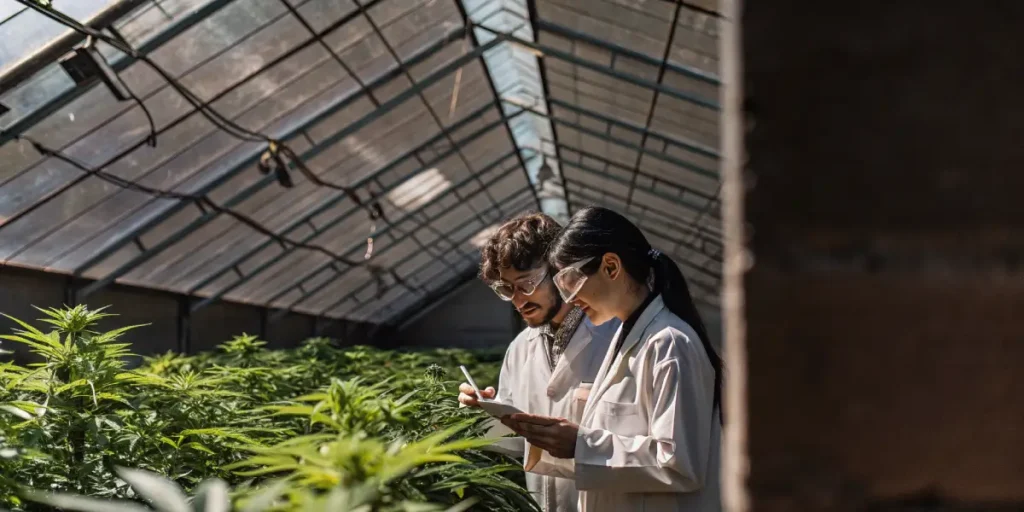
Optimizing Light Conditions
Optimizing light conditions involves balancing intensity, duration, and spectrum. Using a mix of red and blue lights often yields the best results. For those growing strains like Gelato, known for its rich terpene profile, precise light management can enhance flavor and aroma.
Many growers invest in smart lighting systems that adjust with the plant’s needs. These systems can simulate sunrise and sunset, providing a more natural environment that can enhance growth. Regular monitoring is essential, as even small changes in the environment can impact plant health.
Smart lighting systems are becoming increasingly popular due to their ability to automatically adjust light settings based on real-time feedback from the plants. These systems can track growth stages and environmental conditions, ensuring the plants receive optimal light exposure at all times.
For those new to cannabis cultivation, starting with a simple setup and gradually integrating more advanced lighting technologies can be a practical approach. As growers become more familiar with the effects of different light wavelengths on cannabis photoreceptors, they can fine-tune their setups for maximum efficiency and quality.
Latest Research and Future Directions
The latest research on cannabis photoreceptors continues to expand our knowledge. Scientists are exploring how genetic modifications might influence photoreceptor activity, potentially leading to strains that grow faster or produce more cannabinoids.
Future studies might unlock ways to further enhance growth efficiency, reducing resource use while increasing output. This could be a game-changer for commercial growers looking to produce more with less.
Innovations in the field of photoreceptor research are rapidly advancing. New technologies are being developed to precisely measure and manipulate light exposure, allowing for greater control over plant growth and development. These advancements hold promise for increasing efficiency and reducing waste.
As scientific studies on cannabis photoreceptors progress, researchers are also examining the potential for using artificial intelligence to predict how plants will respond to different lighting conditions. This could lead to more tailored growing solutions, enhancing both yield and quality.
Innovations in Photoreceptor Research
Innovations are quickly emerging in the field. Genetic research is paving the way for creating strains with tailored photoreceptor responses. This could mean new strains that are more resilient to environmental stresses.
For home growers, these advances may lead to more accessible grow kits that take advantage of optimized photoreceptor activity. Imagine being able to buy seeds that are pre-programmed to thrive under specific conditions.
Scientific analysis of cannabis photoreceptor function is also leading to the development of new lighting systems that can dynamically adjust light exposure based on the plant’s needs. These systems can potentially optimize growth by delivering the right type of light at the right time.
The possibility of integrating photoreceptor research with other fields, such as biotechnology and data science, is opening up new pathways for innovation. By combining these disciplines, researchers aim to create more efficient and sustainable methods for cannabis cultivation.

FAQs
What are cannabis photoreceptors?
Cannabis photoreceptors are specialized proteins in the plant that detect light. They help the plant determine when to grow, flower, or rest based on the light conditions. These receptors are sensitive to different light wavelengths and play a crucial role in the plant’s life cycle.
Knowing these can help growers manipulate light to boost growth and yield. By controlling light exposure, growers can enhance specific growth phases, making photoreceptors a vital part of successful cultivation.
Scientific studies on cannabis photoreceptors continue to shed light on how these proteins influence plant behavior. By mapping out their functions, researchers are identifying new ways to improve cultivation techniques and optimize plant performance.
The latest research on cannabis photoreceptors is uncovering potential genetic modifications that could lead to more efficient light absorption and utilization, offering exciting possibilities for enhancing plant growth and productivity.
How does light affect cannabis growth?
Light is the primary energy source for cannabis plants. It influences photosynthesis, the process by which plants create food. Different light wavelengths can affect various growth stages. Blue light supports vegetative growth, while red light is critical for flowering.
The timing and intensity of light exposure also play a role. Growers often adjust lights to mimic natural cycles, encouraging plants to grow strong and produce more buds. Proper light management can significantly impact the quality and quantity of the harvest.
The impact of light on cannabis photoreceptor activity is a key area of study, as different wavelengths can activate specific receptors, leading to varied growth responses. Understanding these interactions can help growers fine-tune their lighting strategies for optimal results.
Scientific analysis of cannabis photoreceptor function reveals how plants adapt to changes in light conditions, providing insights into how growers can manipulate light to improve plant health and boost yield.
What is the impact of light on cannabis photoreceptor activity?
The impact of light on cannabis photoreceptor activity is significant. Light triggers photoreceptors, which in turn influence plant growth processes. For instance, adequate red light can stimulate flowering, while blue light can enhance leaf growth.
Using controlled lighting environments, growers can optimize the photoreceptor activity to enhance plant development. This knowing leads to more efficient growing practices and can result in higher yields and better quality cannabis.
Recent scientific studies on cannabis photoreceptors emphasize the importance of light quality and timing. By aligning light exposure with the plant’s natural rhythms, growers can enhance photoreceptor activity, leading to improved growth outcomes.
Advancements in lighting technology are enabling more precise control over the effects of different light wavelengths on cannabis photoreceptors, allowing growers to tailor conditions to specific growth stages and desired outcomes.
Can light affect the potency of cannabis?
Yes, light can affect the potency of cannabis. UV light exposure, for example, has been shown to increase THC levels in some strains. However, it’s essential to balance UV exposure to avoid damaging the plant.
Growers often experiment with different light conditions to enhance potency. Adjusting light spectrums and exposure times can lead to more potent buds with richer flavors and aromas.
The effects of different light wavelengths on cannabis photoreceptors can also influence terpene production, impacting the aroma and flavor profile of the final product. By fine-tuning light exposure, growers can enhance these characteristics.
Scientific analysis of cannabis photoreceptor function continues to explore how light manipulation can optimize cannabinoid profiles, offering potential for producing more potent and diverse cannabis products.
What are the benefits of using LED lights for cannabis growth?
LED lights offer several benefits for cannabis growth. They are energy-efficient, produce less heat, and can be tailored to emit specific light spectrums. This flexibility allows growers to optimize light conditions for different growth stages.
Additionally, LED lights have a longer lifespan compared to traditional lighting. Their ability to simulate natural light conditions makes them a popular choice among growers seeking to improve yield and quality while reducing energy costs.
The latest research on cannabis photoreceptors underscores the advantages of LED lights, particularly their ability to precisely control the light spectrum and intensity. This control is crucial for maximizing the impact of light on cannabis photoreceptor activity.
As growers become more aware of the potential of LEDs to enhance plant growth, the adoption of these lighting systems is expected to continue rising. Their adaptability and efficiency make them a valuable tool for both novice and experienced cultivators.


